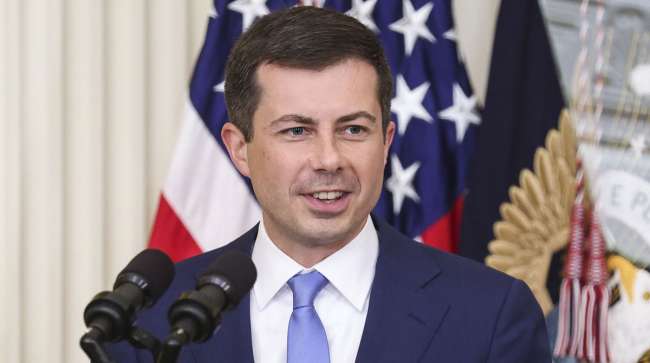Staff Reporter
Federal Leaders Host Roundtable With Trucking Executives

[Stay on top of transportation news: Get TTNews in your inbox.]
Federal officials met with trucking industry representatives to discuss driver retention and supply chain issues July 8.
Transportation Secretary Pete Buttigieg was joined by Federal Motor Carrier Safety Administration Deputy Administrator Meera Joshi and Labor Secretary Marty Walsh at the roundtable discussion.
Attendees included representatives from several trucking groups, including American Trucking Associations, the Owner-Operator Independent Drivers Association, the Women In Trucking Association and the Truck Safety Coalition.

Joshi
Driver turnover, combined with the challenges of the COVID-19 pandemic, has contributed to disruptions in the supply chain. According to DOT, turnover rates are about 90% for large longhaul carriers and approximately 72% for small carriers.
“Our economy is getting back on its feet, but the pandemic has exposed and exacerbated long-standing challenges in our supply chain, including truck driver retention,” Buttigieg said. “We are bringing government, industry and key stakeholders together to help support truck drivers and all the consumers and businesses who rely on them.”

Sullivan
The lag time associated with training and bringing on new truckers can lead to driver shortages, which is a serious issue in the industry. American Trucking Associations estimated a shortage of 60,800 drivers at the end of 2018. According to ATA, the industry will need to hire 1.1 million new drivers over the next decade to keep pace with freight transportation needs and retirements within the sector.
ATA Executive Vice President of Advocacy Bill Sullivan, who represented the federation at the roundtable, emphasized the industry’s priority of finding new recruits. ATA has identified women, young people and people from urban and rural areas as potential sources of truck-driving talent.
“Our industry won’t move offshore and is a solid path to the middle class for men and women willing to join,” Sullivan said. “The median salary for a truckload driver working a national, irregular route was reported most recently at over $53,000, and wages have gone up substantially on average in the first half of 2021. The bottom line is, the trucking industry is hiring and paying great wages to drivers.”

Walsh
The roundtable was held as part of the administration’s Supply Chain Disruptions Task Force, which is meant to provide a federal response to supply chain challenges as the country recovers economically from the pandemic.
FMCSA is supporting state departments of motor vehicles as they return to issuing commercial driver licenses at pre-pandemic rates. According to DOT, some 50,000 CDLs have been issued each month in 2021. This rate is 14% higher than the 2019 monthly average and 60% higher than the 2020 monthly average.
From a Department of Labor perspective, Walsh discussed the agency’s Registered Apprenticeship Program and how it can be used for truck driver retention.
“Registered Apprenticeship, which offers workers quality, on-the-job training along with wage progression, and has been shown to improve job retention, can help build a more stable and resilient workforce,” Walsh said. “I look forward to working with Secretary Buttigieg and industry leaders to expand Registered Apprenticeship in order to improve access and retention in the trucking industry.”
Want more news? Listen to today's daily briefing below or go here for more info:




